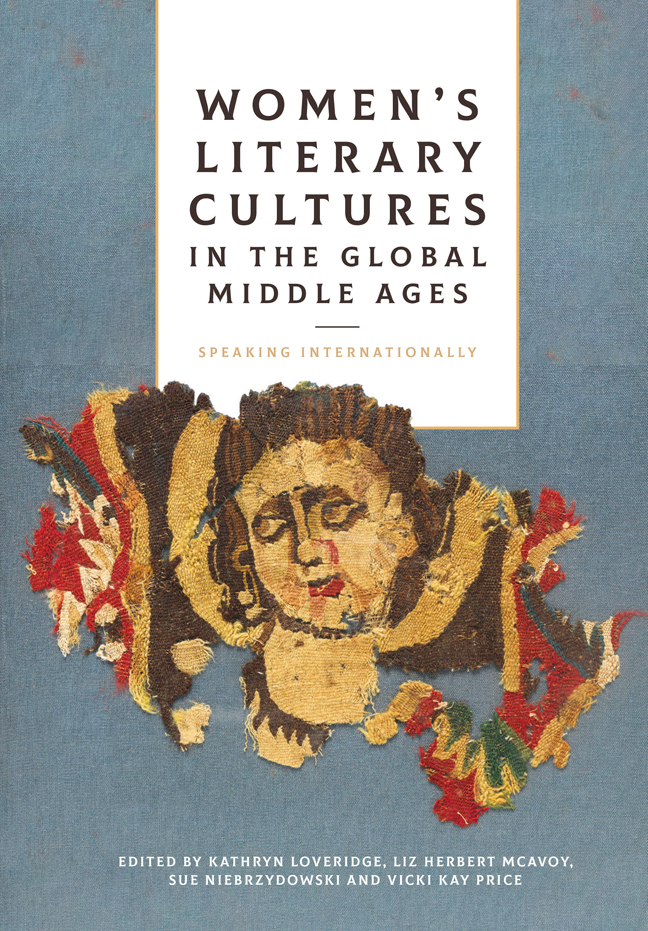Book contents
- Frontmatter
- Contents
- Foreword
- Acknowledgements
- List of Abbreviations
- Book part
- 1 Comparison and Dialogue
- 2 Constructing Gender and Genre
- 3 Saintly Performance and Marian Piety
- 4 Evidence and the Archives: Revisiting and Reconsidering
- Afterword: Intersectionality and Coalitions
- List of Contributors
- Bibliography
- Index
- Gender in the Middle Ages
9 - Mary and Elizabeth: Male Perspectives of Female-Coded Piety in Offices for the Visitation
Published online by Cambridge University Press: 09 January 2024
- Frontmatter
- Contents
- Foreword
- Acknowledgements
- List of Abbreviations
- Book part
- 1 Comparison and Dialogue
- 2 Constructing Gender and Genre
- 3 Saintly Performance and Marian Piety
- 4 Evidence and the Archives: Revisiting and Reconsidering
- Afterword: Intersectionality and Coalitions
- List of Contributors
- Bibliography
- Index
- Gender in the Middle Ages
Summary
Eight offices for the Visitation were composed in the last two decades of the fourteenth century. This essay analyses the first office written, Exurgens autem Maria, composed by Jan of Jenštejn (1347–1400), and the office chosen for official promulgation throughout the Roman Church, Accedunt laudes virginis, written by Adam Easton (1330–1397). Two offices written by men may not be the most obvious place to look for women's contribution to literary culture. However, as Sarah McNamer notes, the Visitation of Mary to her cousin Elizabeth is a female-coded space, where audiences ‘accompany the Virgin wherever she goes: to sit with her and the pregnant Elizabeth […] to be present with her in that quintessential woman's space, the birth chamber, when John the Baptist is born’. McNamer argues that audiences are feminised by texts where female figures are presented as individuals to be identified with and imitated, noting that ‘to feel compassion is to feel like a woman’. She identifies several textual techniques used to evoke compassion within audiences: an association with religious virtue and the maternal, the use of first-person present speech, the use of a directing affective response (such as urging the audience to ‘Behold him!’), placing the audience in a feminine subject position (such as spouse or mother), positioning the audience within a woman's space, and fostering identification with women through the text. Hans Robert Jauss argues that the audience plays an intrinsic part in the life of a work, in whom the passive reception of a piece is changed to active: ‘The historical life of a literary work is unthinkable without the active participation of its audience.’ A discussion of female, and particularly Marian, influences within Jenštejn's and Easton's lives and their responses through the compo-sition of their offices allows a peek into two male composers’ understanding of female-coded piety as present within the Visitation.
The Visitation of the Virgin Mary is a biblical event, found in Luke 1:39–56. The passage describes Mary's visit to her cousin Elizabeth after hearing the news of the older woman's pregnancy with the child that would become John the Baptist. The two women greet one another, and Mary's famous song, the Magnificat, fills verses 46–55. The passage concludes with an explanation that Mary stayed with Elizabeth for about three months before returning home.
- Type
- Chapter
- Information
- Women's Literary Cultures in the Global Middle AgesSpeaking Internationally, pp. 175 - 192Publisher: Boydell & BrewerPrint publication year: 2023



